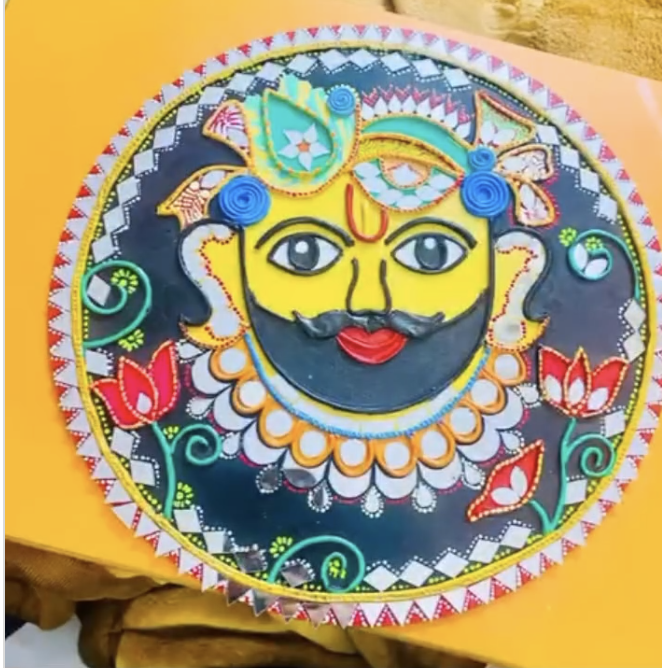Khatu Shyam Ji Lippan Art
Khatu Shyam Ji, a revered deity in Rajasthan, draws countless devotees seeking blessings and solace. The art form known as Lippan Art, originating from the Kutch region of Gujarat, beautifully complements the spiritual and cultural significance of Khatu Shyam Ji. This traditional mud and mirror work has found a unique place in the hearts of devotees and art enthusiasts alike.
The Significance of Khatu Shyam Ji
Khatu Shyam Ji, also known as Barbarika, holds a special place in Hindu mythology. According to legend, Barbarika was a mighty warrior blessed with the power to end any battle in moments. However, he sacrificed his head to Lord Krishna before the Kurukshetra war, who later granted him the boon to be worshipped as Shyam, a name signifying Krishna himself. Today, his temple in Khatu, Rajasthan, is a significant pilgrimage site where devotees from all over India come to offer prayers.
What is Lippan Art?
Lippan Art, also known as Mud and Mirror Work, is a traditional craft of the Rabari community in Kutch, Gujarat. This art form involves creating intricate designs on walls using a mixture of mud and cow dung, adorned with small pieces of mirror. The reflective mirrors embedded in the mud work create a stunning visual effect, especially when light falls upon them, making the designs sparkle and come alive.
The Fusion: Khatu Shyam Ji and Lippan Art
Combining the spiritual aura of Khatu Shyam Ji with the vibrant aesthetics of Lippan Art creates a unique and mesmerizing artistic expression. Here’s how you can incorporate Lippan Art into your Khatu Shyam Ji worship space:
Materials Needed
- Mud Mixture: A blend of clay and cow dung, which acts as the base.
- Mirrors: Small, intricately cut mirrors.
- Wooden Board or Wall: A surface to create the artwork.
- Adhesives: To fix mirrors in place.
- Acrylic Paints: Optional, for adding color to the design.
Steps to Create Khatu Shyam Ji Lippan Art
- Prepare the Surface: Start by choosing a wooden board or a wall where you want to create the Lippan Art. Ensure it is clean and dry.
- Create the Base Design: Sketch the desired pattern, often a combination of geometric shapes and motifs related to Khatu Shyam Ji, such as peacocks, flowers, or other traditional designs.
- Apply the Mud Mixture: Mix clay and cow dung to form a thick paste. Apply this paste over the sketched design, molding it into the desired shapes and patterns.
- Embed the Mirrors: While the mud is still wet, carefully embed small mirror pieces into the design. Arrange them in patterns that will catch and reflect light beautifully.
- Drying and Finishing: Allow the artwork to dry completely. Once dry, you can optionally paint certain areas with acrylic paints to add more vibrancy.
- Installation: If you created your Lippan Art on a wooden board, you can now mount it on your wall. If directly on the wall, ensure it is secure and protected.
Conclusion
The fusion of Khatu Shyam Ji’s divine energy with the traditional beauty of Lippan Art creates a sacred space that is not only spiritually uplifting but also visually enchanting. This unique blend of devotion and tradition showcases the rich cultural heritage of India and offers a serene and aesthetically pleasing way to honor Khatu Shyam Ji.

